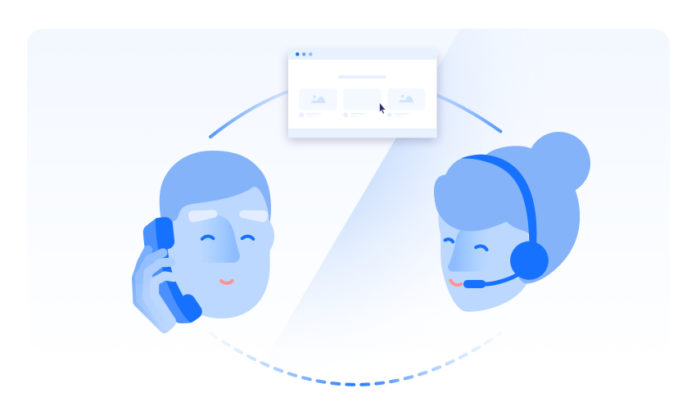Customer expectations are extremely high—a recent Salesforce study found that customers demand seamless, personalized experiences with brands. And if they don’t get them? Well, as 76% of the respondents said: “It’s easier than ever to take their business elsewhere—switching from brand to brand to find an experience that matches their expectations.”
Now consider your last call to customer service.
Exactly.
The bar is so low, most of us breathe a sigh of relief when we make it through the conversation without getting disconnected.
And yet, differentiation in customer service is crucial if you don’t want your company’s success dependent on race-to-the-bottom features like price and product—because we all know that is the slipperiest of slopes. Say I want to buy renter’s insurance, for example, and there’s a $3 monthly difference between two carriers. If the less-expensive company is impossible to get on the phone or has trouble answering my questions when I do connect, I’ll happily pay an extra $3 a month for a company that is easy to contact and respects my questions or concerns.
So what does it mean to not just match, but rather exceed your customer’s expectations the next time they reach out? Here are four ways to deliver an exceptional customer service call experience that delights your customers and differentiates your brand:
Anticipate Their Needs
I’m going to illustrate this via a recent call I placed to an airline company’s customer service line. I considered the call better than most, largely because the company identified my phone number and therefore had my information on the agent’s screen by the time we connected. That alone made it a step ahead of most others. But there is a way to make it extraordinary: If the representative knew the reason for my call—that I had just spent several minutes on the company’s app trying to make it work—and failed. This is more than possible—it’s easy with the right technology. Exhibit A: It’s possible to enable a user to call customer service directly from a specific page in the company’s app so that the representative has advanced insight into the issue. Imagine how much better I would have felt if my call to the airline started with the rep saying: “I see you are trying to make it to Omaha. Do you need help finding a flight?”
Provide Visual Context
No one likes to sit on the phone and hear endless click-clacking. Customers crave transparency, while any opaqueness leads to frustration and worry. Exhibit B: Technology allows for companies to share their representative’s process via their app, so that users customers aren’t left in the dark during the conversation. In my ideal call with the airline, I’m watching as the representative searches all the flights to Omaha.
Teach Them To Fish
People have grown increasingly self-reliant—just a few clicks separate us from a car at the curb, a meal at our desk or clothes in our mailbox. Companies therefore can and should use customer service calls not only to solve customers’ in-the-moment problems but also to ensure they don’t happen again. Returning to my airline example: It’s great if the rep is able to more efficiently search flight options for me. But it’s fantastic if they take a few extra seconds—or even minutes—to explain how I can do it myself next time. Because who doesn’t appreciate a tip that leads to greater efficiency the next time around?
Give Them A (Quick) Say
We all want to be heard, so follow-up surveys are great. Follow-up surveys that require me (or anyone else) to spend several minutes are not. By asking one question—as the airline did at the end of the interaction—you give the customer a voice in the process without being annoying. Another good protocol: The agent assured me it would only take 10 seconds. And because it was via text, it required only a single keystroke. Brief surveys are also more likely to be completed, and thus allow companies to gather information about their customer service and identify the aspects that exceed expectations and those that need attention and improvement.
Are these the only keys to great customer-service experience? Of course not. But it’s a strong way to start providing the best customer service possible, rather than simply beating what is generally a very low bar.





